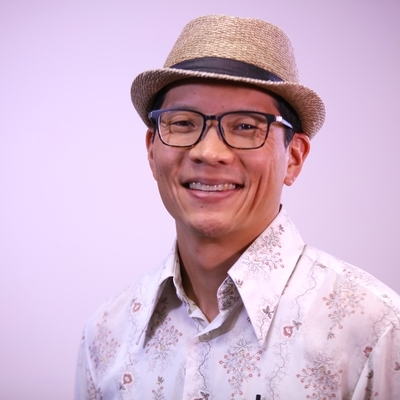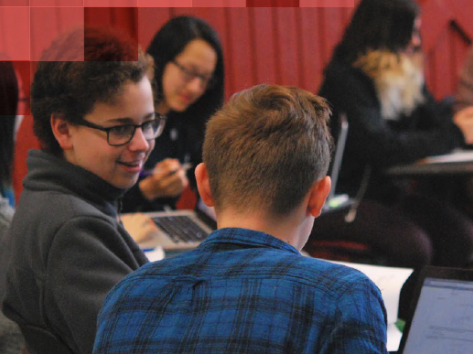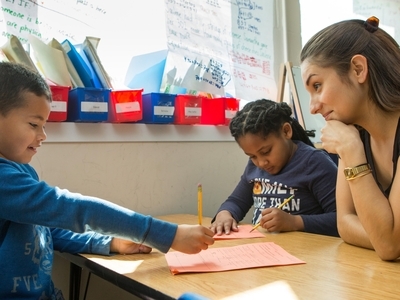Slowing Down Student Research to Encourage Critical Thinking
Topics
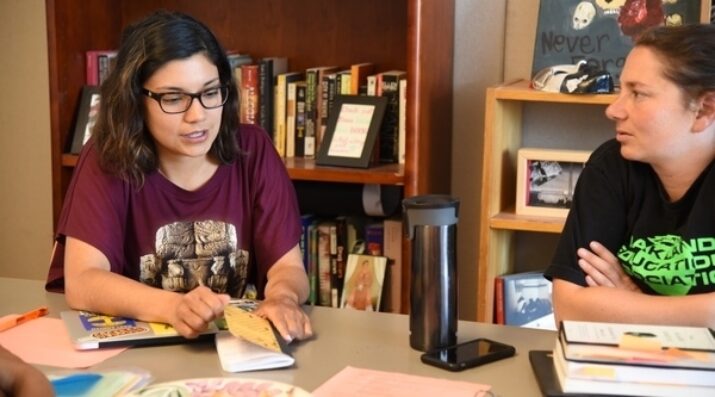
We’ve all had the experience of truly purposeful, authentic learning and know how valuable it is. Educators are taking the best of what we know about learning, student support, effective instruction, and interpersonal skill-building to completely reimagine schools so that students experience that kind of purposeful learning all day, every day.
Is the ease and speed of digital technology at odds with the critical thinking students need to complete a research paper?
Traveling to a destination has never been easier. If I’m visiting one of the 86 schools in Oakland Unified School District (OUSD), I type in the name of the school on an app on my phone, follow directions, and soon enough I’ve arrived at my desired location. Most apps are designed to be “friction-less,” meaning the experience of completing a task, like moving myself from point A to B, should be easy, intuitive, and smooth.
But what if the destination I seek is a coherent paper supported by credible evidence? Is the ease and speed of digital technology at odds with the critical thinking necessary in research?
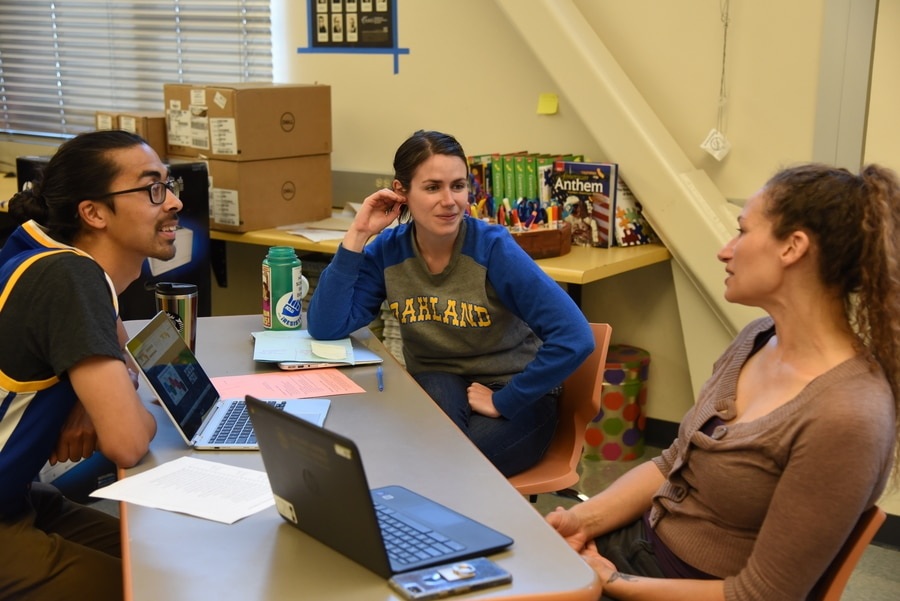
OUSD teachers at a professional development session (Courtesy of Young Whan Choi)
In OUSD, all high school seniors complete a college preparatory research paper as part of their Graduate Capstone project. They start with a topic and navigate a series of winding twists and turns that lead them to a research question, then an outline, and then a written draft; several revisions later they arrive at their ultimate destination—a high-quality research paper.
On this journey, we have found that when students get off-track with the way they organize their evidence, they may struggle to find their way back. When students conduct research, which in this day and age often looks like searching online, they tend to collect a lot of evidence of varying quality. Some evidence is relevant; some is not. Some evidence is credible; some is not.
Over the years, we have experimented with any number of digital notetakers and graphic organizers to help students collect and organize this evidence. There are so many powerful digital tools that it seems silly not to use them.
But unlike using a navigation app, writing a research paper requires critical thinking. Students can easily cut and paste the evidence from an online article into a digital document with an outline, but if they aren’t thinking, the evidence might end up in the wrong part of the outline and the outline itself might be misconstrued.
My OUSD colleague Camrin Fredrick and I began to wonder if the ease of technology might be disrupting the research process in an unhelpful way. In the case of a cognitively demanding task like a research paper, we wondered if more friction in the process would slow students down to a speed where they could struggle to make meaning of their evidence.
We both remember what it used to be like to write a research paper; we would laboriously write evidence on notecards, eventually gather a stack of them, spread them out on the floor, and organize them into logical categories.
At the most recent OUSD Graduate Capstone professional development (PD), we brought back the notecards and modeled a process of using them with students. We started with an example research topic—the spread of infectious diseases among the homeless—and then showed the teachers how we took the 18 pieces of evidence that we had gathered from 5 articles and copied and pasted each piece of evidence into a notecard template.
Here’s where we went analog and the process slowed down. We printed out these sheets of evidence, and teachers cut them into 18 individual notecards. We then had teachers sort the notecards in pairs. In the first sort, teachers read each notecard aloud and discussed with their partner whether it answered the research question or whether it was background information.
In the second sort, teachers looked at only the cards that answered the research question. In OUSD, we are experimenting with a focus on solution-oriented research papers, so the example research question was, “What are some promising practices to address the spread of infectious diseases among the homeless?” For each piece of evidence that answered the research question, they were asked to label it with 1-2 words.
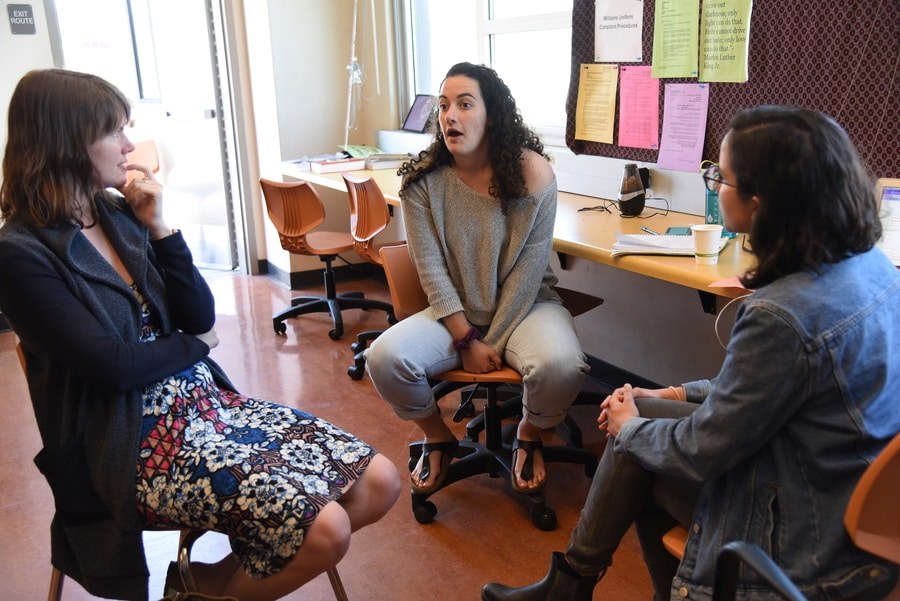
OUSD teachers at a professional development session (Courtesy of Young Whan Choi)
Once again, teachers had to slow down, read each piece of evidence aloud, and think about an appropriate label. Teachers found that most of the evidence could be organized into one of two categories: “immunizations” or “screenings.”
This was the critical step; by creating these categories, teachers had analyzed the evidence. These categories could function as an early version of a thesis statement that answered their research question, as in “Immunizations and screenings are two promising practices to address the spread of infectious diseases among the homeless.”
The process of creating categories forced the teachers to slow down and consider their evidence. At this walking pace, teachers could see if they had enough relevant evidence in each of the categories, if the evidence corroborated one another, and if the evidence came from multiple credible sources. The categories also served another important purpose by giving them additional search terms to help them narrow their online research.
Teachers were ecstatic about using the notecards. All teachers (18/18) rated this part of the PD session as “very valuable.” In the open-ended feedback where we ask teachers to tell us what was most helpful about the session, many teachers named the notecard activity. One teacher wrote that the activity was “helpful in making me think through my own process.” Another said, “wrapping my head around note-taking” was helpful.
While the digital age of friction-less experiences has led to conveniences like GPS-enabled maps, there are places in our lives where speed and ease are not preferable. Academic research is an exercise of deliberate, effortful “slow thinking” rather than intuitive “fast thinking.” As educators interested in developing critical thought in students, we may need to figure out ways to introduce friction back into learning.
Photo at top courtesy of Young Whan Choi.

